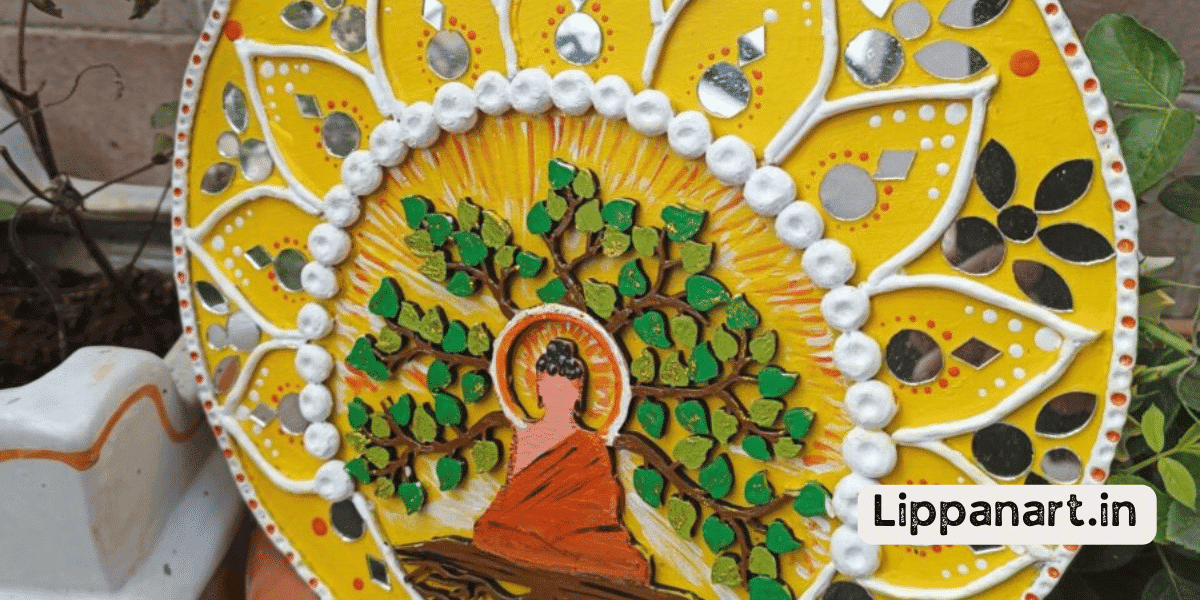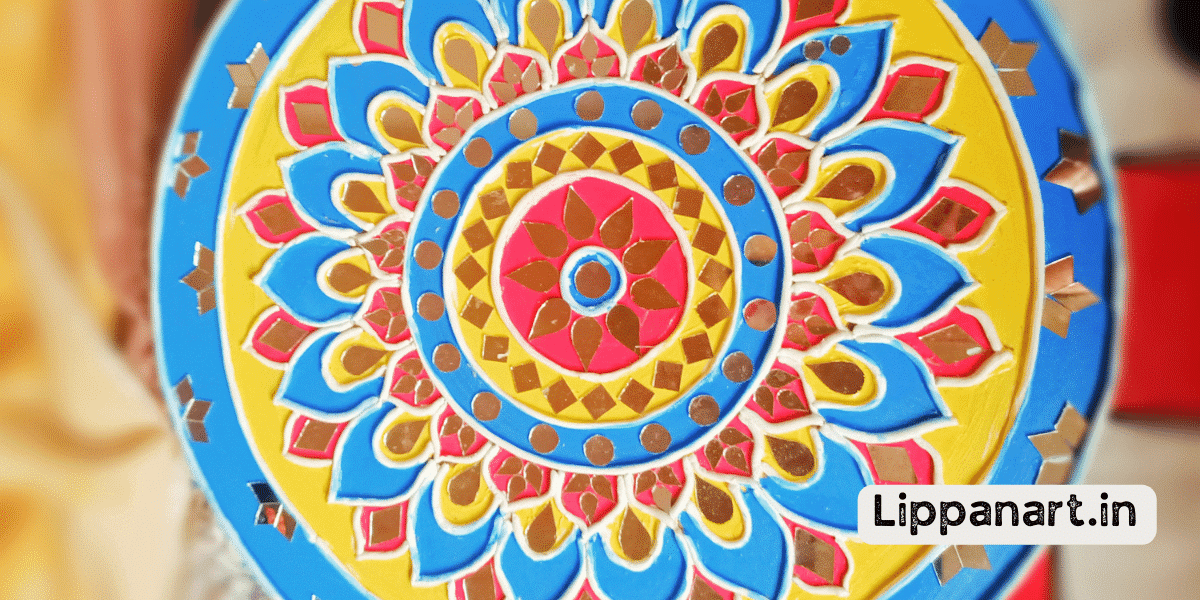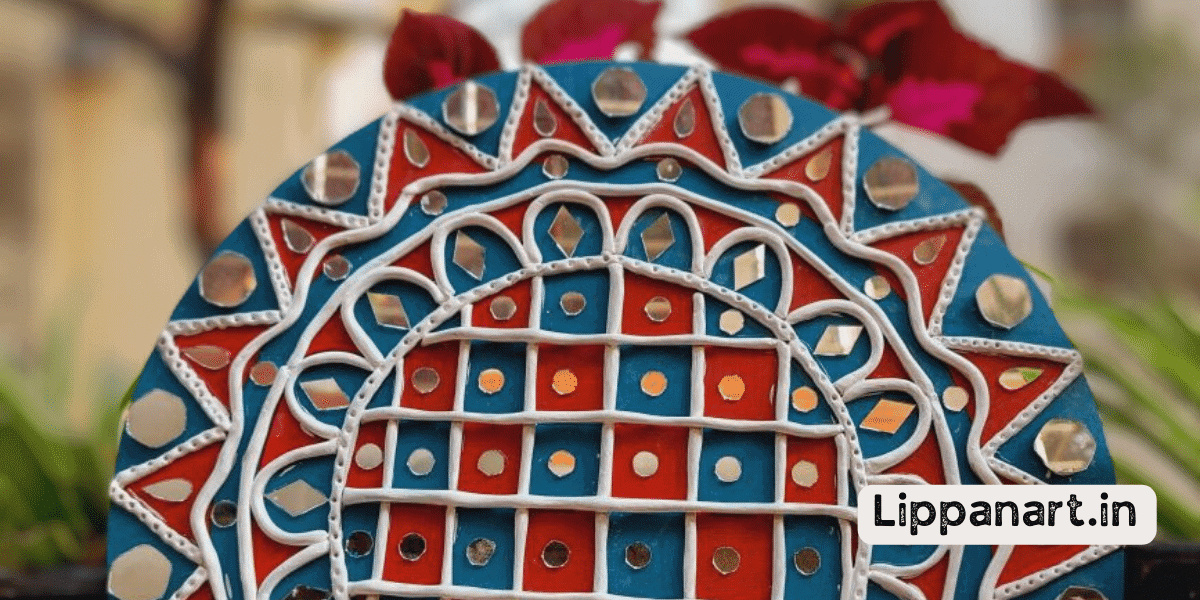Are you ready to unlock a world of balance and harmony?
Mandala Art Therapy has been an ancient practice for centuries to promote inner strength and peace.
It’s time to explore the beauty and power of mandala art therapy and discover how it can improve mental health and emotional well-being.
So, come on an adventure with us and unlock the secrets of mandala art therapy.
Key Takeaways
- Mandala art therapy has ancient roots in spiritual and cultural traditions.
- It is recognized by healthcare professionals for its therapeutic benefits.
- Mandala art therapy helps manage mental health issues and physical illnesses.
- It promotes self-expression, emotional and mental health, and healing.
What Is the History of Mandala Art Therapy
You may be wondering about the history of mandala art therapy and how it has been used to promote healing and well-being.
The roots of mandala art therapy can be traced back centuries, with its origins found in various spiritual and cultural traditions worldwide. Eastern beliefs and practices have heavily influenced its evolution, with the Mandala being seen as a representation of one’s journey towards spiritual enlightenment.
Mandalas have had a long-standing cultural significance, being used as a tool for meditation, self-reflection, and creativity. This artwork has been used to bring awareness to one’s inner world and access deeper understanding.
Over time, mandalas have become increasingly popular in therapeutic settings, providing a safe and creative space for self-expression. Its medicinal benefits have been recognized and embraced by healthcare professionals to help people manage mental health issues and physical illnesses.
Mandala art therapy is a unique form of healing that helps people find inner peace and balance.
What Are the Benefits of Mandala Art Therapy
Discovering the potential benefits of using a creative form of art for healing can be a rewarding experience. Mandala art therapy is a great way to use art for self-expression, emotional and mental health, and healing. This form of art therapy is beneficial in treating various illnesses, such as:
Epilepsy:
- Mandala art therapy can help reduce the frequency and severity of epileptic episodes by providing a calming and therapeutic outlet for individuals with epilepsy.
Hypertension:
- Mandala art therapy can help manage hypertension by providing a therapeutic and creative release of stress and tension.
Cancer Patients:
- Mandala art therapy can be used as a complementary therapy to help cancer patients deal with the physical & emotional trauma of the disease.
Mandala art therapy provides an opportunity to explore the creative side of ourselves and to use art as a way of healing and self-expression. Through mandala art therapy, self-discovery and healing can be achieved.
What Are the Different Types of Mandalas
Mandala art comes in various shapes and sizes, all of which can be used for creative self-expression and healing. From simple geometric shapes to complex designs, mandalas are often used in mandala art therapy techniques to explore the inner self and relieve stress.
The different types of mandalas have symbolism and meanings, which can help individuals explore their emotions and discover deeper truths within themselves. Circular mandalas often represent wholeness and unity, while complex mandalas can represent the complex nature of the human mind and emotions. Some mandalas feature symbols representing the four elements of nature, which can help individuals explore their relationship with the natural world. Other mandalas feature symbols associated with different aspects of the self, such as the mind, body, and spirit.
Mandala art therapy is a powerful tool for self-discovery and stress relief. By creating and reflecting on mandalas, individuals can gain insights into their thoughts and emotions and learn how to better cope with stress. Through this process, individuals can also better understand who they are and discover new ways of expressing themselves. Additionally, mandala art therapy can explore different aspects of the self and help individuals find peace and harmony within themselves.
How Is Mandala Art Therapy Practiced
Exploring your inner self through Mandala art therapy can be a powerful way to discover new insights, find peace and harmony, and better understand yourself. Mandala art therapy is a creative practice that combines traditional therapeutic benefits with a mindful practice of creating symbolic art. Through this practice, personal growth is nurtured, and individuals can use the Mandala to explore their inner world.
Mandala art therapy allows individuals to express themselves creatively through colour, shape, and texture. This process helps create a sense of meaning and purpose and provides a way to gain clarity and insight. The symbolic meanings of the Mandala also offer an opportunity for deeper exploration of personal issues and challenges.
Mindfulness is an important part of mandala art therapy, as it helps to promote self-awareness, self-reflection, and a sense of peace and harmony. Through this practice, individuals can better understand themselves, their relationships, and their environment. Engaging in joyful activities can boost mental health and self-confidence.
The benefits of mandala art therapy can be experienced physically and emotionally. It can provide a safe and supportive space to explore and express emotions and provide an avenue for personal growth and development. Mandala art therapy can be a powerful tool for self-discovery and healing with the proper guidance and support.
- Editor’s Choice
- Best Seller
- Amazon Choice
What Are the Common Themes of Mandala Art Therapy
Through mandala art therapy, you can better understand yourself and explore common themes such as relationships, self-expression, and personal growth.
The Mandala symbolizes a symbolic representation of your inner world and can provide insight into your life.
Mandala art therapy is a powerful tool to help you heal and discover your inner self.
One of the essential aspects of mandala art therapy is colour therapy. Colour healing is used to tap into the energy and emotions within the Mandala, allowing for a deeper understanding of oneself.
The healing process can help to reconnect with one’s spiritual connection and journey towards self-discovery.
Mandalas can be used to express yourself creatively and provide a sense of calm and relaxation.
Through mandala art therapy, you can explore your emotions, heal from trauma, and gain insight into yourself.
What Materials Are Needed for Mandala Art Therapy
Crafting a Mandala is a creative way to gain self-awareness. Many materials and techniques are available to help you create a beautiful mandala masterpiece. Each material and technique offers a unique set of benefits and symbols that can be used for meditation and reflection.
The materials needed for mandala art therapy include:
- Art Supplies: Colored pencils, markers, paints, and other art supplies can be used to create a mandala.
- Writing Utensils: Mandala drawings can be created using various writing utensils such as pens, pencils, and markers.
- Other Materials: You can also use various materials, such as clay, yarn, fabrics, and beads, to create a mandala.
The techniques used for mandala art therapy include:
- Drawing: Drawing a mandala is a great way to practice mindfulness and be creative.
- Coloring: Coloring a mandala can be a great way to relax and express your emotions.
- Crafting: Crafting a mandala with various materials can be a great way to explore your creativity and find a new outlet for self-expression.
The benefits of mandala art therapy include:
- Stress Relief: Mandalas can be used for relaxation and stress relief.
- Self-Exploration: Mandalas can be used to explore your inner emotions and gain insight into yourself.
- Creative Expression: Mandalas can be a creative outlet for self-expression and enhancing quality of life.
How Can Mandala Art Therapy Be Used as a Tool for Self-Care
Are you looking for a way to practice self-care? Look no further than Mandala art therapy! Mandala art therapy is a mindful practice that uses circles and shapes to create art that helps reduce stress, increase personal growth, and promote emotional healing.
Through this practice, you’ll discover the many benefits of self-care that can provide a better life.
Mandala art therapy can be used to relax your mind and body, allowing you to create meaningful and beautiful art. You can use it to explore your feelings and gain insight into your emotions. It can also help you become more mindful and present in the moment.
As you create art, you can use colours, shapes, and patterns to express yourself and develop new insights into yourself and your life.
Mandala art therapy can reduce stress and anxiety, promoting emotional clarity. It’s also a great way to practice self-reflection and learn more about yourself. By reflecting on your current state of well-being, you can gain insight into areas of your life that need improvement.
By using Mandala art therapy as a tool for self-care, you can cultivate a greater sense of mindfulness, reduce stress, and promote personal growth and emotional healing. As you create art, you can also use colours, shapes, and patterns to express yourself and gain insight into yourself and your life.
What Are the Common Challenges Faced When Practicing Mandala Art Therapy
Practising Mandala art therapy can present various challenges, but with the right guidance, you can work through them and reap the benefits.
The common challenges faced when practising Mandala art therapy include the following:
- Unfamiliarity with Techniques: Many people need clarification on the techniques required to create a Mandala and may find themselves stuck.
- Difficulty Letting Go: When creating a Mandala, letting go of expectations and allowing yourself to go with the flow can be difficult.
- Not Knowing What to Expect: People new to Mandala art therapy may need to learn what to expect regarding outcomes, which can be daunting.
To overcome these challenges, it’s important to understand the techniques involved in creating a Mandala and familiarize yourself with the guidelines and benefits of Mandala art therapy. Additionally, having a mentor or experienced guide can help you understand the process and provide support as you create your own Mandala.
With the right techniques, guidelines, and knowledge of the benefits, you can create a Mandala art therapy session that’s both therapeutic and rewarding.
What Is the Difference Between Mandala Art Therapy and Other Forms of Art Therapy
Compared to other forms of art therapy, Mandala art therapy offers unique benefits that make it stand out. Mandala therapy can help children develop creativity, focus, and emotional regulation. It can also be used to process and heal trauma, as the repetitive and calming nature of the practice allows for a safe space for exploration.
Music and mandala art therapy provide creative outlets for emotional exploration and expression. People also use mandala art therapy to explore the spiritual aspects of their lives, allowing them to gain a deeper understanding of themselves.
What Are Some Tips for Practicing Mandala Art Therapy?
Exploring your emotions through Mandala art therapy can be a unique and rewarding experience. By creating a personalized mandala, you’ll be able to express yourself creatively and meaningfully. Here are some tips to help you get started:
- Utilize Color Symbolism: Colors represent different emotions and feelings. You can create a mandala that accurately reflects your inner emotional landscape using this symbolism.
- Create Mindfully: When creating your Mandala, be mindful of your intentions. Allow yourself to be fully present in the moment and create from a place of openness and clarity.
- Incorporate Sacred Geometry: Incorporating sacred geometry into your Mandala can help to create balance and harmony. This can help to create a sense of connection and wholeness.
- Give Meaning to Symbolic Representations: Symbolic representations can give your Mandala a deeper meaning. Choose symbols that mean something to you and use them to create a powerful and meaningful piece of art.
- Set Healing Intentions: Before creating your Mandala, set an intention for your work. This practice can help you channel your energy and infuse your creation with healing intentions.
Conclusion
Mandala Art Therapy is an ancient practice that can promote healing and emotional well-being. It’s a powerful tool for self-care, potentially unlocking inner strength and peace.
With patience and practice, exploring oneself can be a delightful journey of self-discovery. So why not take a chance and explore the world of mandala art therapy?
You may be surprised by the power of its healing potential.














